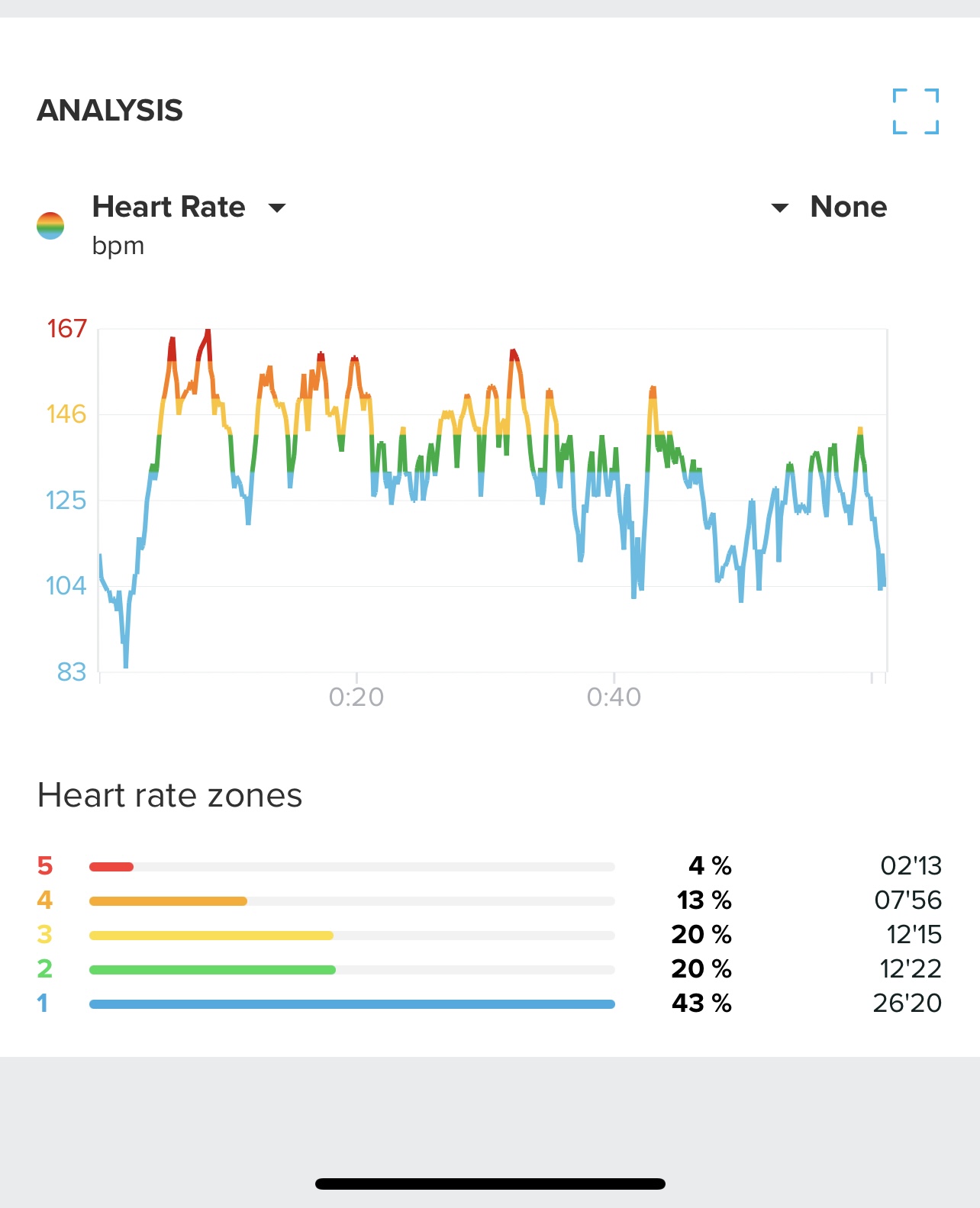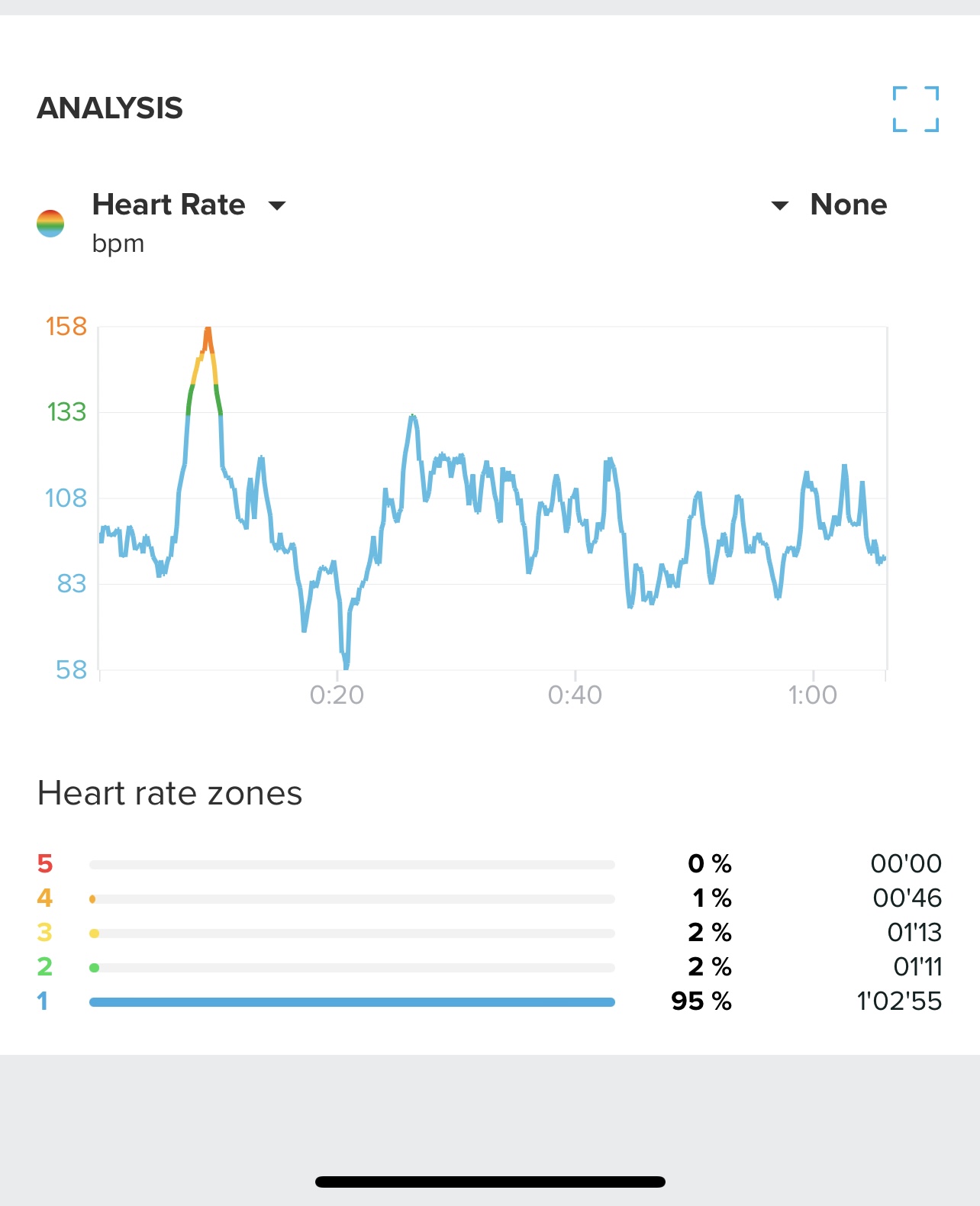Is the Vertical as sub-standard as it seems?
-
@Brad_Olwin I have the same complaint regarding targets for the work portions. HumanGo will often program a target zone that is a combination of zone 1 and zone 2 for my long runs making the zone blocks (for lack of a better word) not really worth much when following the guide.
Also another +1 for out of prescribed zone alerts/vibrations for guides

-
@altcmd said in Is the Vertical as sub-standard as it seems?:
@Brad_Olwin You probably don’t understand despite me trying a few times. If you have used a Garmin or Polar then you would. Have a look here on how Polar does: https://www.youtube.com/watch?v=Z8qRInq_yL0 and I presume you already know Garmin since you have said it so many times that you used an Epix.
And if you read carefully the text I wrote, I talk about targets that are a cross between zones, which sometimes are in 80-20 sessions. It is damn difficult to know from just a pointer and if there is an average number like in your photo so 193, so that 193 could imply a range of 192-194 or even 170-216. Ofcourse one can remember them, but again, like I already said before, that defeats the purpose of a watch like Suunto.
Simply set up a target on TrainingPeaks, the limits of the target will be shown above in the indicator, aim for the middle of the indicator as your target, the middle of my target is 193. Frankly, for your fitness trying to target 192-194 for either HR or Power is impossible. I do not see the issue here, try to keep the pointer in the middle, it is not hard to do and a lot easier than reading numbers . Hopefully I am clear this time.
-
@stromdiddily said in Is the Vertical as sub-standard as it seems?:
@Brad_Olwin I have the same complaint regarding targets for the work portions. HumanGo will often program a target zone that is a combination of zone 1 and zone 2 for my long runs making the zone blocks (for lack of a better word) not really worth much when following the guide.
Also another +1 for out of prescribed zone alerts/vibrations for guides

That is a different issue!!! I would like to have alerts as well and I think this might be on the 3rd party side as some provide alerts and some do not. I have not used them but I believe Intervals.icu has alerts, correct me if I am wrong.
-
@Brad_Olwin my 192-194 reference was just to point out the law of averages as per Suunto’s logic. Glad to hear you taking it seriously

-
@Brad_Olwin intervals does not either. Again, Suunto is alone here as Garmin, Polar, Coros, and even Wahoo do it.
-
I know I’m late to the party, but I have a few comments related to OHR and why I would never train without a chest strap.
Recently I did a workout with a HR chest strap:

Then I did the same workout an another day, but forgot the HR chest strap at home. Same workout, same conditions:

And this is a reoccurring pattern.
So I’m honestly wondering how the HRV measurement will work, if the OHR is unreliable…
-
@tomasbartko depends on the kind of workout and many other variables that are often discussed but is absent in your generalisation.
-
@altcmd this example is strength training and I know that most of the watches struggle with strength training (Apple watches are pretty good though). But my point was that the OHR is inaccurate and I am wondering how accurate are then other metrics dependent on HR when measured from wrist. Just thinking out loud.
-
@tomasbartko that’s a bit of a stretch to say it is inaccurate rather than the reality being the OHRs struggle on these workouts. By your definition Garmins and Polars also struggle so is their HRV wrong too? The logic does not add up.
-
@altcmd I see. I have had an opportunity to test a Coros Vertix 2 and tbh it doesn’t really struggle - have you used a Coros? I have also compared the HRV measurements with HRV on Apple Watch and it was very close. I have also compared Coros OHR to a chest strap and it was very close. I have no experience with Garmin, so I don’t care about Garmin.
Do you want to say that OHR struggles only with specific types of workouts and under specific circumstances? So when I’m doing nothing, just standing there and my watch shows a HR of 150+ thats fine? Despite that I still like using Suunto watches and will continue so.
What I don’t like is this defensive behavior where nobody can say anything negative about a Suunto watch - because this is the feeling I have right now, not only in this thread. Anyway, I don’t wan to argue with you over OHR, this was my last post here, peace…
-
@tomasbartko For me the best Suunto OHR is the 9PP due to its light weight. I have tested this as well as the Vertical against an AW Ultra and a Suunto Smartsensor.
For me the Vertical is ok, the AWU almost exactly matches the belt and the S9PP is a bit worse than the AWU. The AWU is a larger watch so how Apple manages this I do not know. My main issues with the Vertical OHR are occasional drop outs and cadence locks on steep technical descents. The AWU rarely cadence locks but willl sometimes drop out (rare).I have been testing sleep and HRV with AWU and the Vertical (yes this feature is not fully released yet but should be this fall) and found them very similar. So, I am not observing HRV issues with the Vertical.
I had a Garmin Epix2 for 8-9 mo before I sold it and the OHR was a bit better than the Vertical but no better than the 9PP and nowhere near the AWU.
For tracking without exercise, I find all the watches equivalent with no issues for me from the Vertical, S9PP or AWU. All give me the same RHR values and I might add all 3 are very close on VO2Max (that will change with the Vertical firmware update as well, the change for me provides nearly identical values but that requires the belt with the Suunto.)
Hope this helps, these are my observations and my honest feedback on these. You probably know I field test for Suunto, I think the Suunto OHR is no better or worse than Garmin but Apple is clearly superior for me above any watch I have tested. The Quantified Scientist agrees.
-
@tomasbartko I just did an interval session on a stationary bike (Bowflex Velocore) using my Suunto HRM belt connected to it, and I wore my Vertical using OHR as a comparison.
The values generally matched whenever I checked, and at the end had the identical average heart rate value as well. As Im on a stationary bike, and not throwing my wrist around, the OHR works as expected. I definitely always use an HRM belt with the Vertical for more dynamic workouts.
Ive never used an HRM for weight training as its not really a cardio workout for me, but I do notice that OHR a bit slow to get to a more resting HR in-between sets.
-
@tomasbartko sorry to hear if you took it negatively but I have had my own share of complaints and my question to you was to lay out all the facts. This you only did in your last post. I still say there are many variables that affect the OHR and if you suspect an issue, I suggest you contact Suunto and seek service.
-
And as with anything, take anyone’s subjective experience including mine with a grain of salt especially when comparing other watches. We are in a Suunto Forum after all so there is some implicit bias here. Data speaks for itself.
-
@altcmd said in Is the Vertical as sub-standard as it seems?:
And as with anything, take anyone’s subjective experience including mine with a grain of salt especially when comparing other watches. We are in a Suunto Forum after all so there is some implicit bias here. Data speaks for itself.
I got very bad OHR with all S9 serie.
my vertical can provide me a good OHR after 15 to 20m Warming up, but it’s still too late for a 40m run.
My epix pro shows the exact value as my Suunto belt without warming, it really surprised me.
-
I pretty much always use a HRM chest strap. I know it’s going to be better than any watch, so… why not

-
@Brad_Olwin that‘s my observation too. The AW compared to a H10 strap is either similar, or one to two beats off. And I also found the Vertical and different Garmins I tried very similar and also not too far off (compared to the H10). I really doubt one can say that the Vertical has a bad OHR by default.
-
@ChrisA agreed and I think we are discounting a lot of other variables like positioning in the arm, skin temp, etc. that impact this. Aside from AWs, one really needs to test similar competitor watches in a like-for-like setting and environment to discern difference in OHR (assuming that is the only variable component of interest but ofcourse GPS and the like can also be checked).
-
@altcmd I get a lot of the evidence is not scientific but there is definitely a consistent voice around the OHR not being great. If you need more concrete evidence Rays review noted points where the OHR completely lost the plot while seemed to do well in other sections. That certainly matches my experience.
-
Suunto vertical is a very good looking watch, but as to most features it lags much behind its competitors and this is a shame. Why offering OHR, blood measurement if unreliable? why pool swimming is still so wrong? why map do not contemplate street names? why the mip is so washed out (Casio GBD H2000 is a mip screen but way way better than suunto and the same Coros watches). Coros in particular is a very good example of a clear willing to improve and implement their watches through continuous firmware updates embracing all their line up and not just the latest release. Suunto does seem to think the same way. I bought the SV titanium but after 29 days of daily comparisons with a Coros and a Garmin I sent it back. That’s a pity as the SV is, in theory, an awesome watch.